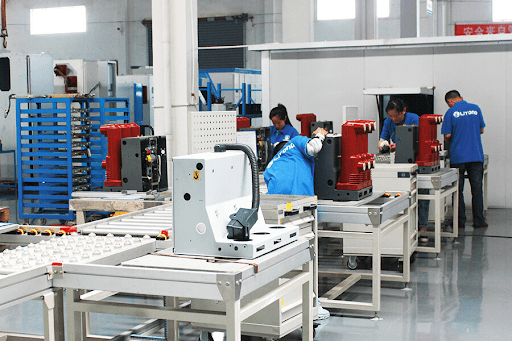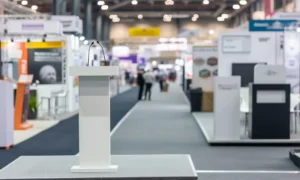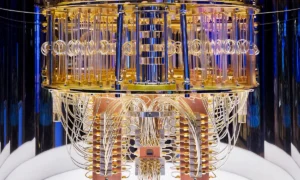Ensuring Grid Stability: The Critical Role of Fast Fault Interruption
In modern society, electrical energy is the foundation of industrial production and daily life. However, power systems are constantly exposed to fault threats, whether external (such as lightning, natural disasters) or internal (such as equipment aging, operational errors). The most common and destructive of these is the short-circuit fault.
When a short circuit occurs, the current can instantly surge to tens of times the normal working current, releasing enormous energy that can instantly melt cables, burn equipment, and even trigger fires and explosions. If the power cannot be cut off within the crucial few tens of milliseconds of the fault, the consequences are unimaginable.
It is precisely to meet this challenge that the Vacuum Circuit Breaker (VCB) emerged. The VCB is an indispensable protection device in medium voltage power systems (typically ranging from 3.6 kV to 40.5 kV). It is critical not only for safely switching normal operating currents but, more importantly, for serving as the power system’s “last line of defense,” rapidly and reliably interrupting devastating short-circuit fault currents.
VCB Principles: Core Technology and Performance Foundation
The reason the Vacuum Circuit Breaker is considered the mainstream choice for modern power systems is attributed to the vacuum arc extinguishing technology utilized in its core component—the vacuum interrupter.
A vacuum interrupter is a highly sealed ceramic enclosure maintaining an extremely high vacuum, millions of times lower than the Earth’s surface pressure. When the VCB contacts separate to interrupt the current, a high-temperature arc is momentarily drawn between the contacts. In the ultra-high vacuum environment, the arc medium (trace metal vapor evaporated from the contact material) rapidly and uniformly diffuses. As the AC current waveform naturally passes through the zero point, the arc energy quickly dissipates, and the vacuum environment instantaneously restores the dielectric strength between the contacts, thoroughly preventing the arc from reigniting. This unique arc extinguishing mechanism offers advantages such as high speed, minimal contact wear, and zero emissions. Compared to traditional oil circuit breakers or SF6 circuit breakers, VCBs hold a dominant advantage in environmental friendliness and maintenance costs.
Three Core Factors Ensuring Long-Term Reliability
Beyond the core arc extinguishing principle, the following three factors are key to determining the long-term reliability and safety when selecting and evaluating a Vacuum Circuit Breaker.
1. Core Breaking Capacity: Rated Short-Circuit Breaking Current
The Rated Short-Circuit Breaking Current (Isc) is the bedrock for measuring VCB quality. It defines the maximum fault current that the circuit breaker can safely and reliably interrupt at its rated voltage.
This parameter is more than just a specification; it represents the highest level of expertise from the vacuum circuit breaker manufacturer in contact material, interrupter design, and manufacturing processes. A VCB with a high Isc rating signifies a greater safety margin and stronger system protection capability.
2. Operating Mechanism: Assurance of Longevity and Maintenance
The operating mechanism is the power source of the VCB, responsible for rapidly completing the contact opening and closing operations when needed. Its choice directly affects the VCB’s mechanical life and maintenance requirements.
- Spring Operating Mechanism (Spring Operating Mechanism): Features a mature structure, reliable mechanical performance, and high cost-effectiveness, making it the most widely used type currently.
- Magnetic Operating Mechanism (Magnetic Operating Mechanism): Uses electromagnetic force for direct actuation, offering advantages like fewer moving parts, extremely long mechanical life (over 100,000 cycles), and minimal maintenance requirements, making it the trend for high-frequency operation and maintenance-free designs.
3. Insulation Trend: Embedded Pole Technology
The Embedded Pole is a major trend in modern VCB design, critical for enhancing the VCB’s insulation reliability and resistance to environmental factors.
This technology integrates the vacuum interrupter and the main conductive circuit components into a single, robust insulating unit using high-performance epoxy resin. This eliminates air gaps, completely isolating the assembly from moisture, dust, and pollution, transforming surface insulation into volume insulation. This results in:
- Significantly enhanced dielectric strength: Preventing flashover risks in high-humidity or heavily polluted environments.
- Maintenance-free operation: Internal live parts are permanently protected, eliminating the need for periodic cleaning or re-tightening.
- Improved mechanical strength: Providing robust support to the interrupter, resisting vibration and shock during transport or operation.
Where the Value Lies: VCB Protection in Diverse Sectors
The Vacuum Circuit Breaker, with its high reliability and low maintenance characteristics, has become the “universal” protection switch in medium voltage distribution systems. Its application value is evident in the following key sectors:
1. Urban Power Grids and Transmission & Distribution Substations
In urban power grids and T&D substations, the Vacuum Circuit Breaker plays the dual role of “traffic hub” and “safety sentinel.” It serves as the core protection and control switch for substation feeder circuits and the high-voltage side of main transformers, acting as a critical node in the power transmission chain. When the system encounters a devastating short-circuit fault, VCBs leverage their millisecond-level fast breaking capacity to precisely isolate the faulted section in a minimal time. This critical speed not only protects expensive main transformers and distribution assets to the maximum extent but, more significantly, minimizes the fault’s impact, effectively preventing cascading failures in the grid. This ensures the supply continuity and overall system stability of the urban power grid, guaranteeing reliable power access for users.
2. Industrial, Commercial, and Critical Facilities (Data Centers, Malls, Steel Mills)
The Vacuum Circuit Breaker is the core protection element in the medium voltage distribution systems of large commercial buildings, shopping malls, high-rise buildings, and heavy-duty industrial environments. For commercial buildings, supply stability directly relates to business efficiency and customer experience. VCBs are primarily responsible for protecting the building’s main incoming lines and area transformers. Their fast breaking capacity minimizes the impact of local faults on the entire distribution system, ensuring the continuous operation of critical equipment like central air conditioning, lighting, and elevators.
In heavy industrial settings (such as steel and metallurgy), the VCB’s long electrical life and high mechanical endurance allow it to withstand the intensive operating conditions of frequent starting and stopping of large motors. Concurrently, in critical facilities requiring extremely high power quality (like data centers, hospitals, and financial institutions), the VCB’s high reliability and fast fault isolation capability effectively mitigate the massive economic losses and operational risks that could result from power system failures.
3. Rail Transit and New Energy Generation
The application of VCBs in the rail transit and new energy sectors primarily highlights their exceptional adaptability to extreme operations and harsh environments. In the rail transit (such as subways and high-speed rail) traction power supply systems, train movement causes frequent and intense current fluctuations, requiring the VCB to perform extremely fast and frequent opening and closing operations. For such high-frequency applications, VCBs equipped with a Magnetic Operating Mechanism are selected. These boast ultra-long mechanical life and maintenance-free characteristics, ensuring long-term system stability. Meanwhile, in the outdoor feeder lines and grid-connection switches of wind farms and solar power stations, equipment is constantly exposed to moisture, large temperature swings, and salt spray corrosion. VCBs utilizing Embedded Pole technology ensure high insulation, anti-pollution capability, and minimal maintenance needs in these remote, harsh environments, powerfully driving the reliable grid integration of green energy while reducing remote operation and maintenance costs.
Conclusion and Outlook
The Vacuum Circuit Breaker is an indispensable safeguard for the safety and efficiency of modern power systems. Through a series of technological innovations, including vacuum arc extinguishing technology, high-performance operating mechanisms, and Embedded Pole technology, the VCB has achieved a perfect combination of high reliability, long life, and maintenance-free operation. It has become the irreplaceable mainstream trend in the medium voltage switchgear sector.
Moving forward, VCBs will continue to evolve toward miniaturization and intelligent integration, incorporating more sensors and communication functions to seamlessly integrate into digital grids and smart substations, continuously contributing core strength to the safe and stable operation of global power systems.





























